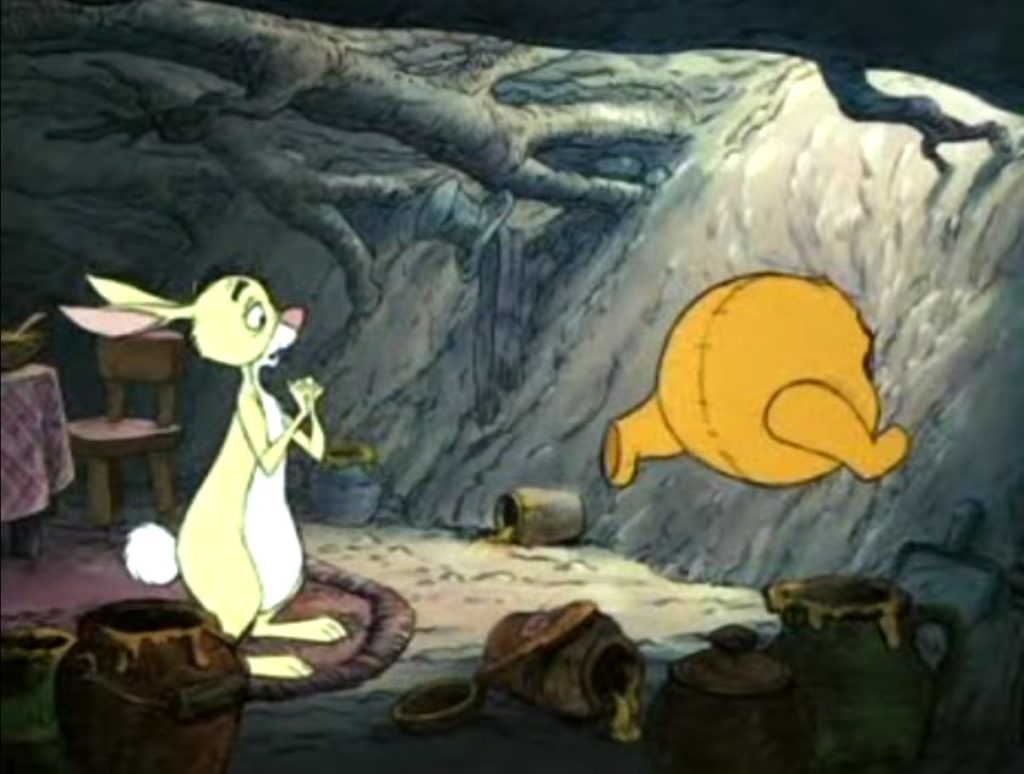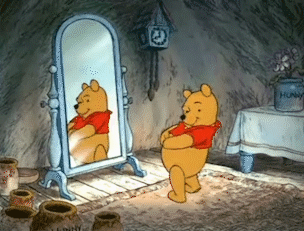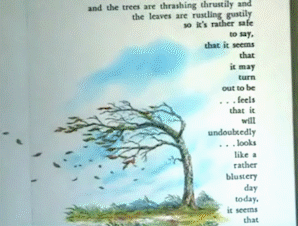In this upsetting and unfair Xi Jinping biopic a cartoon bear wanders around the woods making bad decisions and singing songs. It’s one of the few classic Disney films I hadn’t seen. I thought that watching it would restore my sense of childhood wonder, then I remembered I never had a sense of childhood wonder.
If you’re wondering what constitutes “many”, it’s three. The film contains the featurettes “Winnie the Pooh and the Honey Tree” (1966), “Winnie the Pooh and the Blustery Day” (1968), and “Winnie the Pooh and Tigger Too” (1974), which hail from the Wolfgang Reitherman era of the company and serve as reasonably accurate adaptations of select AA Milne stories.
The animation has that rough 60s Disney quality, where you can almost see flickers of pencil schmutz. Vocal talent includes Sterling Holloway as Pooh, John Fiegler as Piglet, and Stan Freberg as a “laughing honey pot” (he was not credited for this monumental role, in an injustice Tinseltown has yet to reckon with). The total running time is just 74 minutes. This didn’t seem particularly short in 1977 (Dumbo is exactly an hour and four minutes long), although it does now that multiplex theater timeslots are forged in titanium.
“Winnie the Pooh and the Honey Tree”: Winnie the Pooh is a revolting fatbody who eats everyone’s honey while remarking that he’s “grumbly in his tumbly (sic)”. He becomes so fat that he gets stuck in Rabbit’s tunnel, and the entire gang (including a gopher who isn’t in the original book) combine their talents to free him. Pooh looks disgusting in his red shirt – buttocks protruding. Very very disrespectful.

I wonder why certain creative decisions were made. Why does Pooh keep his HUNNY on the highest shelf (which he can only reach while standing on a chair?) Is he stupid? Or does it hint at hidden character depth – Pooh subconsciously trying to break his HUNNY addiction, the way a compulsive smoker might “hide” their cigarettes?

The most probable explanation is to fit the music to the action cues. The shot begins with sixteen bars of music remaining (“with a hefty, happy appetite, I’m a hefty, happy Pooh!” x2), and Pooh must waste a few seconds doing something (like fetching a chair) for the song to end at the triumphant moment he grabs the HUNNY.
Also, Pooh can rotate his head 360 degrees. This might have gotten laughs in 1977; now it looks like The Exorcist.

“Winnie the Pooh and the Blustery Day” sees Hundred Acre Wood being flooded by a fierce storm, with all the animals being washed away atop various bits of detritus while regretting their decision to vote for Bush. It contains an eerie dream sequence where Pooh floats out of his body and has a nightmare about heffalumps. Doug Walker used to call these “Big-Lipped Alligator Moments” – animated sequences that are completely pointless, nightmarishly over-the-top, and never referenced again. It’s also notable as the introduction of Tigger, whose name I don’t enjoy typing. My left index finger is millimeters away from an incident. A wiser man would play things safe and call him Tigga, but I persist.
As with Mickey Mouse and the Beanstalk, the film frequently breaks the fourth wall, or rather the fourth page. The narrator will hold conversations with characters in the book, and so forth. This gets tiresome, although it allows for some fun animation.

“Winnie the Pooh and Tigger Too” is about a bouncing Tigger who bounces too much and gets stuck up a tree at the top of the page. He learns that he’s scared of heights. His friends tell him to stop being a pussy and come down, but he simply can’t, and eventually the narrator intervenes, rescuing poor Tigger by folding the page. There’s another Big-Lipped Alligator Moment. There’s a poignant animated scene that was possibly created for the film’s release (I’m not sure), detailing Christopher Robin’s plans to go to school and perhaps get on lithium to stop his hallucinations of talking animals.
Winnie the Pooh belongs to Disney and will continue to do so until at least 2026, when the character enters the public domain. Pooh’s ownership history is complicated – in 1930 AA Milne sold the character to someone called Stephen Slesinger, who died in 1953, at which point his widow licensed the rights to Disney in exchange for regular royalties. Lawsuits from Slesinger’s estate ensued, alleging that Disney was welshing on said royalties. This resulted in a decades-long legal slapfight that descended into low comedy – apparently Slesinger’s estate literally hired goons to rake through Disney’s trash for shredded documents. Pooh is big business, bringing in billions of dollars a year. It’s not impossible that Disney would have been bankrupted in the 1980s without the Pooh MUNNY jar.
What led Walt to acquire the rights to AA Milne’s Pooh stories, and thus (probably) save his own company? Apparently, his daughter liked them. That was all it took.
If Diane Disney had possessed different reading tastes, the Disney canon might look totally different. Lady Chatterley and the Tramp, or The Rescuers Down and Out in Paris and London, or Make Mein Kampf, or The Dalmatian With A Hundred and One Young. HP Lovecraft owned a cat. It wasn’t called Tigger.
No Comments »
Comments are moderated and may take up to 24 hours to appear.
No comments yet.

